#Hiroyuki Yamaga
Text




ROYAL SPACE FORCE - THE WINGS OF HONNEAMISE
‘王立宇宙軍 オネアミスの翼’
dir. Hiroyuki Yamaga
#royal space force the wings of honneamise#the wings of honneamise#gifs#hiroyuki yamaga#anime#sci fi#animeedit#animation#filmgifs#moviegifs#fyeahmovies#ours#arina
250 notes
·
View notes
Text
youtube
Happy 40th Anniversary to the original Daicon 4 Film! It was first screened at Daicon IV opening ceremonies in Japan on August 20th, 1983. Hideaki Anno, Hiroyuki Yamaga and Takami Akai would later go on to found Gainax. You can read a translation of the production report from 1983 published in now defunct Animec magazine on Zimmerit here!
#80s anime#Daicon Film#Daicon IV#Gainax#Hideaki Anno#Hiroyuki Yamaga#Takami Akai#General products#video#links out#40th anniversary#Youtube
188 notes
·
View notes
Text
On the 20th of August 1983, Daicon IV was released. It was made by Daicon Film, a 12 man studio with the 3 founding members being Hideaki Anno, Hiroyuki Yamaga, and Takami Akai. The studio would later go on to become Gainax studios.
Happy 40th Anniversary! 🎉
16 notes
·
View notes
Text
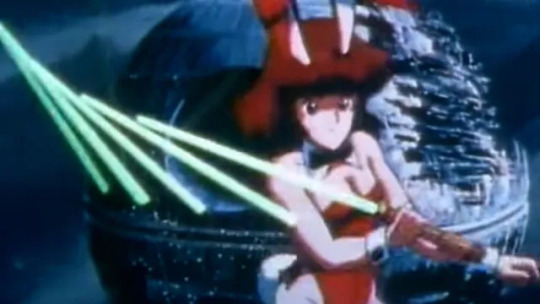
Monday, May 27, 2024
"Just on the border of your waking mind, there lies another time."
195. DAICON IV OPENING ANIMATION (Hiroyuki Yamaga, 1983) - Japan - Streaming - YouTube - 6 minutes. New to me #177.
0 notes
Text


ROYAL SPACE FORCE - THE WINGS OF HONNEAMISE
‘王立宇宙軍 オネアミスの翼’
dir. Hiroyuki Yamaga
#royal space force the wings of honneamise#filmedit#anime#animation#animeedit#fyeahmovies#japan#worldcinemaedit#1980s#fyanimegifs#dailyanimatedgifs#ours#by arina#gifs
416 notes
·
View notes
Photo
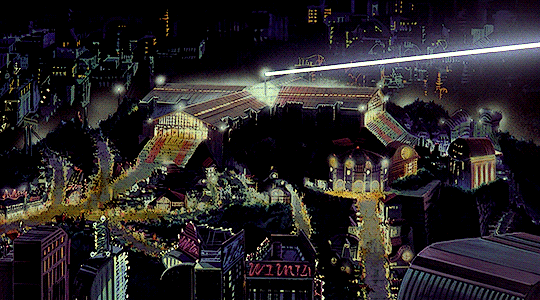



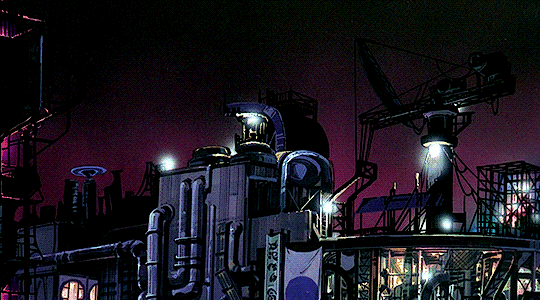


ROYAL SPACE FORCE - THE WINGS OF HONNEAMISE
‘王立宇宙軍 オネアミスの翼’
dir. Hiroyuki Yamaga
#royal space force the wings of honneamise#anime#animation#anime scenery#anime aesthetic#filmedit#animeedit#retro anime#80s anime#filmgifs#moviegifs#fyeahmovies#*#flashing
458 notes
·
View notes
Text
Accepted Shorts List
This list will be updated as shorts are selected, and will become a masterdoc for entries.
Piper, dir. Alan Barillaro (Available on Disney+)
Dissolve, dir. Carina Heller
Sharp Teeth, dir. David James Armsby
Tar Boy, dir. James Lee
Moses of Prosthesis, dir. Gagame
Quasi at the Quackadero, dir. Sally Cruikshank
Welcome to Hell, dir. Erica Wester
Friendly Shadow, dir. David James Armsby
The Acorn Princess, dir. Kris Yim
Drawn to You, dir. Eleanor Davitt
Scattershot, dir. Jade Smania
Ramshackle, dir. Zi Chen
Paperman, dir. John Kahrs (Available on Disney+, Amazon, iTunes, Google Play)
Loop, dir. Erica Milsom (Available on Disney+)
Jinxy Jenkins & Lucky Lou, dir. Michael Bidinger and Michelle Kwon
Kitbull, dir. Rosana Sullivan
Out, dir. Steven Clay Hunter
In a Heartbeat, dir. Beth David and Esteban Bravo
Ice Merchants, dir. João Gonzalez
Diamond Jack, dir. Rachel Kim
Lackadaisy (Pilot), dir. Fable Siegel
The Cat Came Back, dir. Cordell Barker
Fuelled, dir. Michelle Hao and Fawn Chan
The Man Who Planted Trees, dir. Frédéric Back
My Friends Take the Night Bus, dir. Sofi
Wallace & Gromit: The Wrong Trousers, dir. Nick Park
The Naked King -What a Beautiful Life-, dir. rapparu
Coming Out, dir. Cressa Maeve Beer
Dear Girl, dir. Choi Ji-eun
Jibaro, dir. Alberto Mielgo (Available on Netflix, Love Death + Robots S3E9)
The Witness, dir. Alberto Mielgo (Available on Netflix, Love Death + Robots S1E3)
The Legend of Pipi, dir. Julia Schoel and Birgit Uhlig
The Cameraman's Revenge, dir. Wladyslaw Starewicz
What's Opera, Doc? dir. Chuck Jones
The Dover Boys at Pimento University; or, The Rivals of Roquefort Hall, dir. Chuck Jones
Kitty Kornered, dir. Bob Clampett
A Wild Hare, dir. Tex Avery
Everything Will Be OK, dir. Don Hertzfeldt
Yankee Doodle Daffy, dir. Friz Freleng
Duck Dodgers in the 24½th Century, dir. Chuck Jones
Long Gone Gulch, dir. Tara Billenger and Zach Bellissimo
I Love to Singa, dir. Tex Avery
Opal, dir. Jack Stauber
Scaredy Cat, dir. Chuck Jones
I Should Leave This Mall I Think, dir. Noodle
Porky's Duck Hunt, dir. Tex Avery
Bambi Meets Godzilla, dir. Marv Newland
Porky in Wackyland, dir. Bob Clampett
Rabbit Seasoning, dir. Chuck Jones
One Froggy Evening, dir. Chuck Jones
Don vs. Raph, dir. Jhonen Vasquez
Cat City, dir. Victoria Vincent
Roller Coaster Rabbit, dir. Rob Minkoff
Tummy Trouble, dir. Rob Minkoff
Trail Mix-Up, dir. Barry Cook
Blood Bound, dir. Lyly Hoang
Ciao, Alberto, dir. McKenna Harris (Available on Disney+)
Blackfly, dir. Christopher Hinton
Charlie the Unicorn: The Grand Finale, dir. Jason Steele
Free Apple, dir. Ian Worthington
Bigtop Burger Season 1, dir. Ian Worthington
There's a Man in the Woods, dir. Jacob Streilein
Llamas with Hats: The Series, dir. Jason Steele
Welcome to my Life, dir. Elizabeth Ito
Duck Amuck, dir. Chuck Jones
We Can't Live Without Cosmos, dir. Konstantin Bronzit
Geri's Game, dir. Jan Pinkava
Have to change the format cause tumblr has a limit to text in a single list
68. Snow-White, dir. Dave Fleischer
69. DAICON IV Opening Animation, dir. Hiroyuki Yamaga
70. Rooty Toot Toot, dir. John Hubley
71. SHOP: A Pop Opera, dir. Jack Stauber
72. Rabbit of Seville, dir. Chuck Jones
73. The Cat Concerto, dir. Joseph Barbera and William Hanna
74. My Little Goat, dir. Tomoki Misato
75. Asparagus, dir. Suzan Pitt (Available on the Criterion Channel)
76. Puparia, dir. Shingo Tamagawa
77. The Cybernetic Grandma, dir. Jiří Trnka
78. Captain Yajima, dir. Ian Worthington
79. Agoraphobia, dir. Victoria Vincent
80. Donald in Mathmagic Land, dir. Hamilton Luske, Wolfgang Reitherman, Les Clark and Joshua Meador
81. Joy Street, dir. Suzan Pitt (Available on the Criterion Channel)
82. The Old Man and The Sea, dir. Aleksandr Petrov
83. The Dream of a Ridiculous Man, dir. Aleksandr Petrov
84. Vincent, dir. Tim Burton
85. World of Tomorrow, dir. Don Hertzfeldt
86. World of Tomorrow Episode 2: The Burden of Other People's Thoughts, dir. Don Hertzfeldt (pay per view of Vimeo)
87. The Magic Portal, dir. Lindsay Fleay
88. The Golden Chain, dir. Adebukola Bodunrin and Ezra Claytan Daniels (available on the Criterion Channel)
89. Black Soul, dir. Martine Chartrand
90. Hedgehog in the Fog, dir. Yuri Norstein
91. Dreams of the Rarebit Fiend: The Flying House, dir. Windsor McCay
92. Around is Around, dir. Evelyn Lambart and Norman McLaren
93. Popeye the Sailor Meets Sinbad the Sailor, dir. Dave Fleischer
94. Historia Naturae (Suita), dir. Jan Svankmajer
95. Still Lost I Guess, Here's a Tunnel, dir. Dario Alva
96. Kapaemahu, dir. Joe Wilson, Dean Hamer and Hinaleimoana Wong-Kalu
97. Long-Haired Hare, dir. Chuck Jones
98. Muto, dir. Blu
99. Windy Day, dir. John and Faith Hubley
100. Bully for Bugs, dir. Chuck Jones
101. The Haunted Hotel, dir. J. Stuart Blackton
102. Destino, dir. Dominique Monfery (Available on Disney+)
103. Fantasy, dir. Vince Collins
104. To Beep or Not To Beep, dir. Chuck Jones
105. Pixillation, dir. Lillian Schwartz
106. Goodbye Jerome!, dir. Chloé Farr, Gabrielle Selnet and Adam Sillard (Available on the Criterion Channel)
107. Betty Boop's Halloween Party, dir. Dave Fleischer
108. Jumping, dir. Osamu Tezuka
109. Baby Fingers, dir. Adrian Dalen
110. On Your Mark, dir. Hayao Miyazaki
#favorite animated short#animation#animated short#pixar#looney tunes#charlie the unicorn#llamas with hats#lackadaisy#love death and robots#in a heartbeat#don hertzfeldt#tom and jerry#worthikids#filmcow#bugs bunny#daffy duck#bigtop burger
57 notes
·
View notes
Note
I'm curious about the 'mythical “mid-production pivot” theory' that you mention Eva fans surmising. I'm given to understand that Anno took a darker and more psychological tack around episode 16, after reading a book of poetry about depression, and certainly the show's original proposal and the first draft of episode 24 seem to bear this out: Tokyo 3's destruction and Asuka's depression seem to have been later additions. Am I wrong or are you referring to something else?
You aren't wrong per se, it just wasn't nearly as dramatic a turn as these stories tended to suggest. By episode 24, for example, you already had Episode 16 full diversion-into-Shinji's mind; you already even have Episode 4's focus on Shinji's depression and 'auteur' delivery approach. So while there would be individual back-and-forth about individual episodes, and the show got edgier over time, it wasn't a large shift from the initial plan.
The specific draft of episode 24 you can see here; it was written by Akio Satsukawa, and most importantly never reviewed or approved by Anno. So its tonal shift isn't a directorial choice, instead just another creator's vision of the project, and one that was scrapped. I don't think it reflects strongly a debate about the show's direction - instead it can be viewed as bit of a leaked, unofficial document.
The poetry book you are referring to is Bessatsu Takarajima's "Understanding Mental Disease" - you can see some details on it here. The cited Newtype November 1996 interview I think really gets at how this was used:
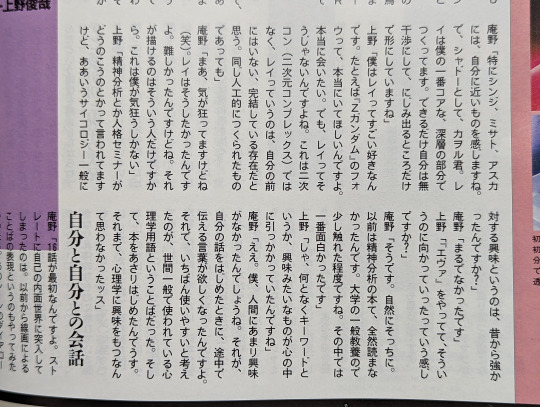
Anno: I was stuck on Rei's monologue in the recap episode. One day, my friend lent me a psychology special of Bessatsu Takarajima. I was shocked by poems from that book. I was blown away. They switched my mind. Rei's monologue suddenly came to my mind.
It isn't really a depressed man trying to find solace that incidentally changed his work; he was hunting for inspiration for the show actively. So sure, reading this book 'changed' the direction in a certain sense; but only because the direction wasn't known and Anno was doing creative research, not because he was depressed and decided to change things up based on his own his turmoil.
Anno's depression was a bit more over the *production*, not his own mental health per se. He trying to Make It Work as an artist and hitting huge roadblocks at the end. Episodes 25 and 26 are absolutely different from the intended vision - but due to physical inability to complete that vision resulting from production delays, not a mood swing. He was at his most depressed after the completion of the show due to this, feeling it has drained him; his most famous "depression" comments are actually about that period:
After the television broadcast finished, I became worse and worse, and went to see a doctor. I even seriously contemplated death. It's like [I] was empty, with no meaning to [my] existence. Without the slightest exaggeration, I had put everything I had [into Evangelion]. Really. After that finished I realized that there was nothing [left] inside of me. When I asked [the doctor?] about it afterwards, [he said?] "Ah, that is an 'identity crisis'
There is also an interview with longtime Gainax staffer Evangelion producer Hiroyuki Yamaga where he pretty-much says Anno was exaggerating the drama in interviews for clout, lol:
On Anno’s severe depression, his “crisis of the soul,” as a motive in the development of Evangelion.
YAMAGA: Well, I think Anno may have appeared in the Japanese media as you suggest; he’s made comments about wanting to die, and so forth, but at least from my perspective, things were never as serious as they appeared in the press. [LAUGHS]
Finally, and I don't have like one link or anything for this, but its just when you go through what we know of the production history, you can't really find a break point like this (outside of episode 25), there doesn't seem to be a turning point. All the themes are there from the beginning. Evangelion changed a ton during production, don't get me wrong, but here - look at the 1993 Evangelion Proposal document. The summary for episode 24 is:
Rei breaks down. Her secrets are revealed. At last awakened, the twelve strongest Apostolos descend from the Moon. Both Eva Unit-06 and the American continent vanish completely. Humans acknowledge their helplessness in the face of the Apostolos' crushing power. The promised time, when people will return to nothing, approaches. A human drama in the depths of despair.
Here is part of Shinji's character summary:
The young protagonist believes he can do nothing by himself, but, as new experiences change him and he is able to look reality in the face, he learns and grows as a person.
Naturally, we believe adults must give children self-purpose and the strength to act on their own, for the cause of passing on knowledge and technology. However, today's children can be found by themselves in front of the television, not interacting as part of a group. Other issues such as substance abuse, and never doing anything manually, leave children not knowing what they should do.
Children stuck in a reality wrought with pressures are left unable to act on their own. Are things really okay the way they are?
Its all there, right? Instrumentality, depression, commentary-on-otaku, etc. It was always the intent of the show.
I think this myth as I call it comes from the fact that episode 16 can seem jarring to audiences - but I don't think its jarring *thematically*, its jarring directorially. Some of that is the production getting a little stretched at that point; the abstract, introspective approach does require less animation cuts. But when Anno is asked about the dive-into-Shinji's-mind choice for the episode:
Anno: As far as that goes, I thought it was fine, but then when [the angel] speaks Japanese that was the end [of my initial conception]. Kaworu-kun had been prepared as a “human type” [angel] from the start, and I wanted to hold on to the idea of [an angel] conversing in human language until then. When I wondered, well, what will [Shinji] do after he gets taken into the angel, I wondered if this might be [his] chance for self-reflection. Episode 16’s “inner space”-like environment was the first [of that sort]. That went relatively smoothly.
Its like "oh yeah i was gonna have him talk to an angel, but I thought oh crap that will impact Kaworu's reveal too harshly, so what to do....ah, what about Shinji talks with himself?" This isn't a depression-pivot, this is just the creative process, the team was learning and experimenting as they went.
22 notes
·
View notes
Text
youtube
Daicon IV Opening Animation 1983
I wanted to share this really EPIC animation that might be of interest to any fans of Japanese animation. Begin at 1:50 to skip the recap. This is the original (non upscaled) version of this animation so it's only 480p. The Daicon III and IV animations were produced in Japan for the Science Fiction Fan Convention Nihon SF TaiKai. They were produced by a group of amateur animators known as Daicon Film, who would later go on to form the animation studio Gainax. Daicon III was made by Hideaki Anno, Hiroyuki Yamaga and Takami Akai and Daicon IV credits twelve people, including Yamaga as the director and Anno and Akai as animation supervisors. This is a sequel to the 1981 opening, the film stars the same magical girl from Daicon III now all grown up. She travels through space interacting with some of the most popular geek culture characters from the 70s and early 80s… see if you can recognize any of them! The animation is really audacious, ambitious, and action packed especially considering this was made by “amateurs”. The first time I saw it, the atomic blast sequence really blew my mind. The (unauthorized) use of the Electric Light Orchestra Song “Twilight” is fittingly epic. The end of the video also features some behind the scenes art and rough animation. Additionally, I am a huge fan of Neon Genesis Evangelion, which was created by Hideaki Anno. There are several shots in this animation that very closely resemble visuals from Evangelion, which came out almost 15 years after this. It's pretty cool to see how those iconic visuals were already on his mind that early on. I think this animation is so cool and an important piece of animation history. Due to copyright issues the animation never had an official release or distribution… I’m grateful for the internet.
(posted by immiapia)
0 notes
Text

Royal Space Force - The Wings Of Honneamise (1987)
dir. Hiroyuki Yamaga
65 notes
·
View notes
Photo

王立宇宙軍 オネアミスの翼
東宝 出版・商品販促室
原案・脚本・監督=山賀博之、企画・プロデュース=岡田斗司夫、作画監督・スペシャル・エフェクト・アーチスト=庵野秀明、キャラクターデザイン・作画監督=貞本義行
#王立宇宙軍 オネアミスの翼#royal space force: the wings of honnêamise#hiroyuki yamaga#山賀博之#toshio okada#岡田斗司夫#hideaki anno#庵野秀明#yoshiyuki sadamoto#貞本義行#anamon#古本屋あなもん#あなもん#映画パンフレット#movie pamphlet
23 notes
·
View notes
Text
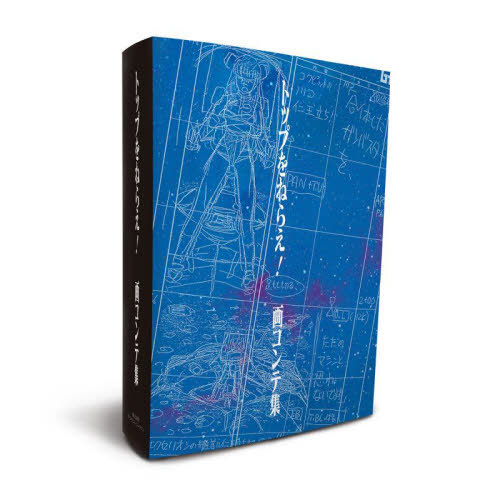
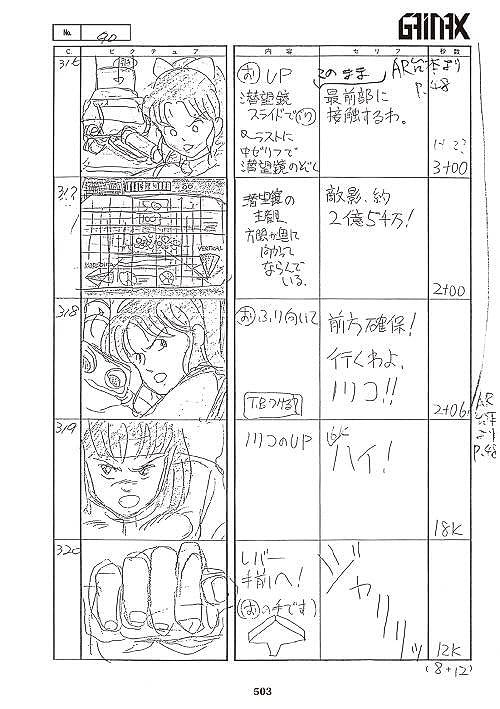

Head's up - A storyboard collection for Gunbuster (aka Aim For The Top!) is being released in Japan soon! Estimated to come out mid February 2024, the book will have over 700 pages of printed copies of the complete storyboards for every episode of the original OVA series. You can pre-order this book on CDJapan now via the podcast's affiliate link here, if you'd like to help support the podcast at the same time!
#Gunbuster#Aim for the Top#storyboards#anime merch#affiliate link#Gainax#Hideaki Anno#shinji higuchi#hiroyuki yamaga
22 notes
·
View notes
Photo

#Royal Space Force: The Wings of Honneamise#cine#póster#cartel#anime#Hiroyuki Yamaga#Gainax#cinema#cifi#scifi#ciencia ficción#film#animation#animación#movie#Ôritsu Uchûgun: Oneamisu no Tsubasa#Royal Space Force#filme#cult movie#Wings of Honneamise: Royal Space Force#The Wings of Honneamise#ci-fi#sci-fi#science fiction#Clásico
4 notes
·
View notes
Photo





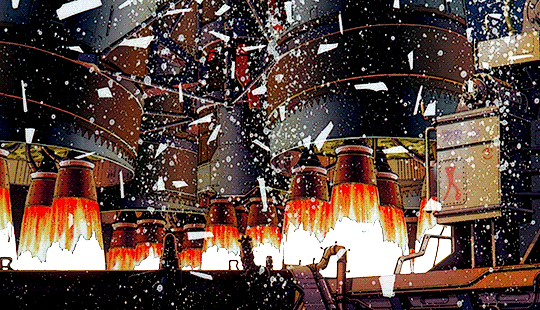
ROYAL SPACE FORCE - THE WINGS OF HONNEAMISE
‘王立宇宙軍 オネアミスの翼’
dir. Hiroyuki Yamaga
#royal space force#royal space force the wings of honneamise#anime#animation#animeedit#retro anime#80s anime#filmedit#moviegifs#fyeahmovies#*#flashing
598 notes
·
View notes
Photo
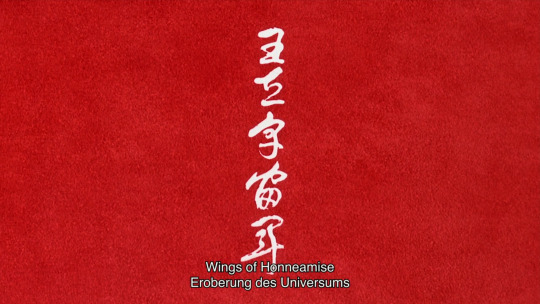

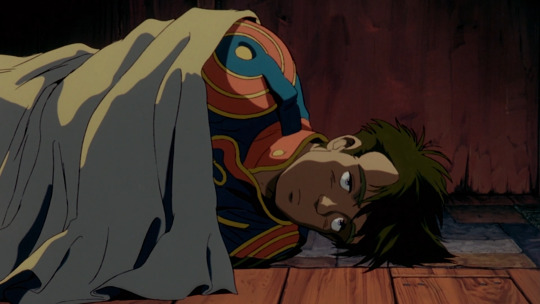

youtube
Royal Space Force: The Wings of Honneamise (1987)
My rating: 6/10
The basic premise - a sort of alt-history The Right Stuff set in a Miyazaki-esque world of impossibly graceful vehicles and strange animals - is a good one, and both production design and animation are beautiful, but unfortunately the plot is a bit uneven - fairly slow in the middle, and bogged down by a frankly awful "romance" subplot that goes absolutely nowhere and culminates in an attempted rape - after which the victim apologizes for fighting off her attacker, the protagonist of the movie. So that's bad. Still, as I said, the movie has some strong visuals - although I find it kind of funny that among all these strange, intricately designed airplanes, the rocket itself is basically just a Soyuz.
2 notes
·
View notes
Text
トップをねらえ!
Aim for the Top! (known in English most commonly as GunBuster) is a mecha OVA released by Gainax between October 1986 and July 1987. It was directed and co-written by Hideaki Anno, and co-written by Toshio Okada and Hiroyuki Yamaga.
In the near future of 2015, aliens destroyed a fleet of Earth’s space navy. The series follows high school students Noriko Takaya and Kazumi Amano, along with their coach Koichiro Ohta, as they join the mecha squadron Top and train to pilot the ultimate Earth defense weapon GunBuster.

As happens with near future sci-fi shows like this, and especially mecha shows that take place in space, the technology that the production crew dreams up is naturally put on the forefront, and more mundane tech is put on the back burner. That being said, despite the fact that most of the show takes place in space, there are a few instances of planes.
The most that we see airplanes in GunBuster are early on, late episode one and early episode two, where our cast flies to a near-earth station on a Japan Airlines horizontal-takeoff-to-orbit space-plane. Unfortunately, that’s about all we really get. We do get occasional glimpses of the standard space-fighters, which look to be much like fighter aircraft, but we only see them in hangers until the last episode, and by that point technology has advanced to the point that they don’t look much like planes anymore. We also learn in the Science Lesson special episode 4+1 that the design of Exelion, the flagship, which I took as something of a Deathstar rip-off, is actually a lifting-body, made to take advantage of the ether of space (to do what exactly I’m not sure).
Ultimately, GunBuster doesn’t put enough forward to receive many points, and gets a middling score of two planes out of five.

#トップをねらえ!#aim for the top!#gunbuster#gainax#anime review#hideaki anno#toshio okada#hiroyuki yamaga#ova#mecha#sci-fi#1986#1987#noriko takaya#kazumi amano#koichiro ohta#choach#2 of 5#airplane
19 notes
·
View notes